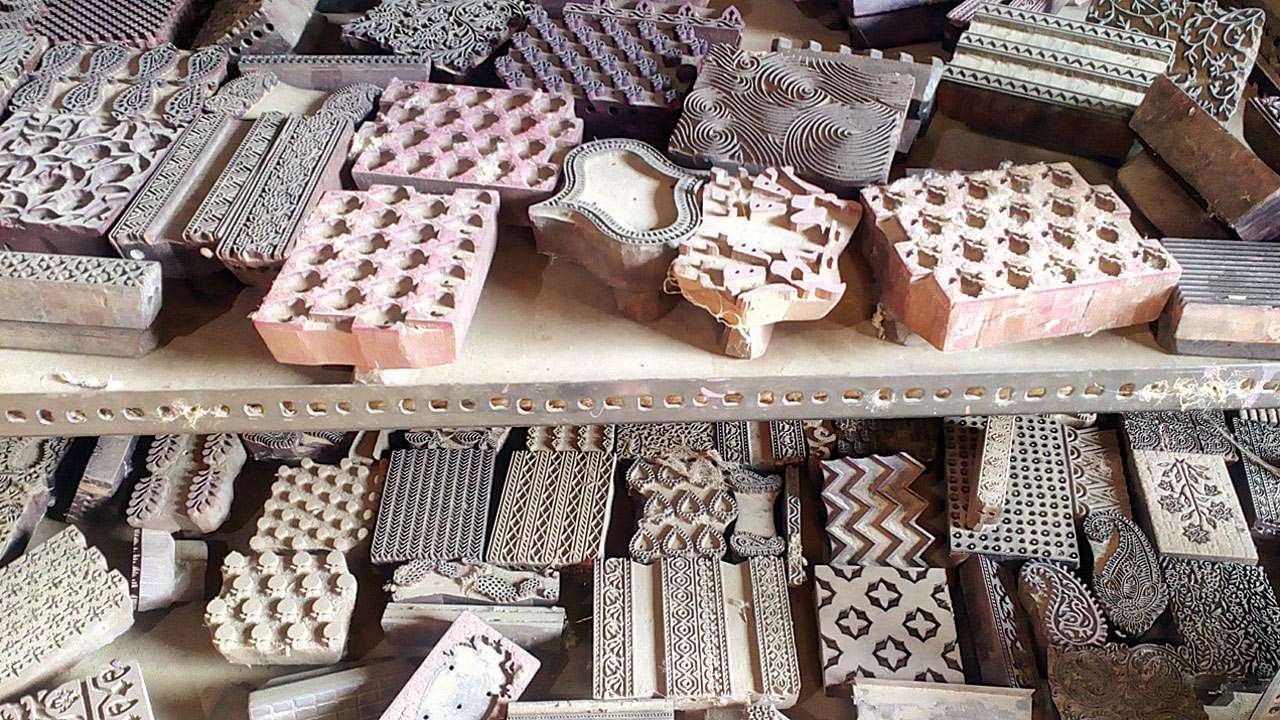
Deep in the Dhar district of Madhya Pradesh, in the village of Bagh that gets its name from the Bageshwari Devi temple, the craftsmanship of the Bagh Printers are in rhythmic synchronisation. Two middle-aged artisans, Sardar and Ajay, who have been working here for over 16 years, are the only ones present post their 5 o’clock check-out time. They sit completing block prints with wooden stamps made from sagwan (teak) – one engraved with mango motifs and another with a floral design. They dip the block prints in a square bucket with a woollen sponge at the bottom that soaks in the magenta pink dye, before carefully aligning the stamp on the cloth and beating it down with their fists in two successive, loud thuds.
“We’re still using the same methods that we [my ancestors] did a 100 years ago,” begins Mohammed Yusuf Khatri, owner of Bagh Printers, whose family has been working in the trade of traditional Alizarin Bagh Print since the 7th century. “I learnt everything about block printing from my father,” he smiles. With nearly 50 years of experience in Bagh Hand Block Printing, Khatri has showcased his winter collection and even walked the ramp at Lakme Fashion Week in 2017. He’s also been around the world to Germany, France, Italy and America to demonstrate the art of hand block printing.
The process of arriving at the finished product is a long-winding one, which Khatri then goes on to list. The cloth, sourced from Bhiwandi in Maharashtra, is first washed in the river and dried. It is then rolled in bundles and soaked overnight in a mixture of caster oil and goat dung, which gives it a yellow tinge. “This process works like a detergent and the heat from the paste is infused in each thread of the cloth making it softer,” Khatri says. After three-four rounds of washing and airing out the fabric, it is ready for printing. For the dyes, pastes made from Dhawada (Anogeissus latifolia) gum are used in the two kinds of red and black dyes. The former is made from alum crystals and the latter from iron. “We only put these dyes as an outline,” adds Khatri. After letting it sit for 8-10 days, the cloth is taken to the river for another round of rinsing. “We cannot allow a single droplet to ruin the prints on the cloth. So we catch the cloth in the reverse direction of the river’s flow and wash out the dyes,” he explains.

(L-R) Recipient of two National Awards Mohammed Yusuf Khatri has also received two Seal of Excellence awards from UNESCO; Sardar, one of the Bagh Printer artisans
The printers are advocates of vegetable dyes made from pomegranate peels, Dhawada leaves, neem leaves, root of Aal (Morinda tinctoria) and jaggery that make up the reds, blues, yellows and lavender colours. The family business of five brothers along with hundreds of their artisans make prints on bed sheets, cushion covers, table cloths, stoles, saris and salwar suits. In any given year, Khatri estimates a whopping 70,000 meters of printed fabric that is distributed to brands. Among the takers are Fabindia, Reliance’s Ajio, Tata’s Taneira and Mrignayani, an e-commerce portal that sells products made by MP weavers.
Bagh Printers’ cotton saris start from Rs 800
Modal saris (made of a semi-synthetic cellulose fiber) start at Rs 3,000
Silk saris, the most expensive, start at Rs 5,500